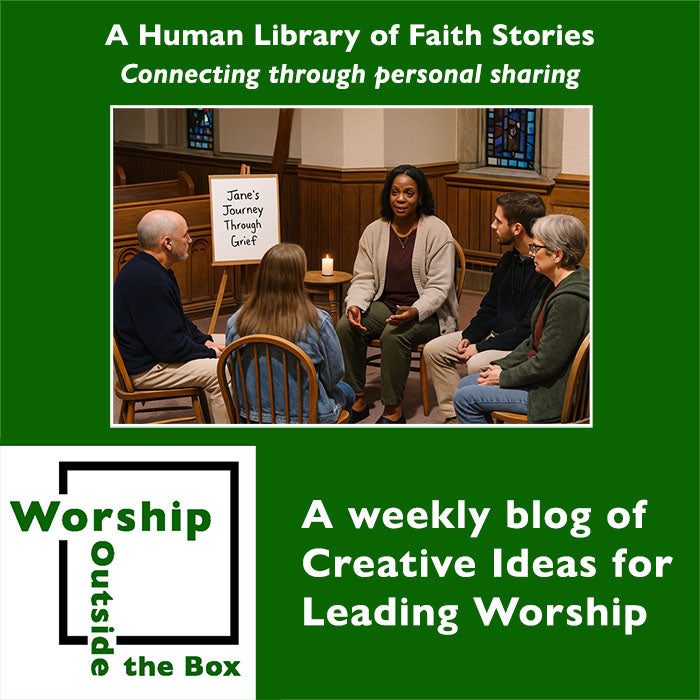
49 – A Human Library of Faith Stories
Share

A weekly blog of Creative Ideas for Leading Worship
A Human Library of Faith Stories

Connecting through personal sharing
Click for audio narration of this post
One of the most powerful ways we grow in faith is by hearing the experiences of others. Just as the Bible is rich with stories of struggle, transformation, and divine encounter, so too are the lives of our own congregation members.
This creative worship idea transforms your church into a "Human Library," where stories of faith become the books, and the storytellers are the authors.
The Concept
Select 3 or 4 members of your congregation who are willing to share a brief but meaningful faith story. These could include moments of doubt, unexpected encounters with God, a calling to serve, or a personal transformation sparked by prayer or worship.
Each storyteller is stationed at a "story chair," marked with a simple sign—such as Jane’s Journey Through Grief or Bruce’s Unexpected Call to Ministry. These areas become sacred spaces for testimony and connection.
Service Flow
· Introduction
Begin with a short reflection on the power of story in faith development. Remind the congregation of how Jesus taught through parables.
· Instructions
Explain the format. Congregation members will divide into small groups and rotate between the story stations. Each storyteller shares their story for five minutes, followed by a few minutes of quiet reflection or gentle questions.
· Story Rotations (Allow 30 minutes)
Groups move through the stations, ensuring everyone hears multiple stories.
· Whole Group Reflection (Allow 10 minutes)
Gather everyone back together. Offer a moment for silent prayer, note-taking, or journaling. Then, invite volunteers to briefly share reflections on what they heard or felt.
· Closing Worship
End with a meditative hymn or waiata. Offer prayers of gratitude for the vulnerability and courage of the storytellers.
Physical Setup
- Arrange 3–4 “story stations” with chairs placed in a semi-circle or a quiet corner.
- Provide small signs naming each storyteller and the theme of their story.
- Consider placing a candle or a simple symbol at each station to create a sense of sacred space.
Why It Works
This format moves us beyond passive listening and invites the entire congregation into relational, embodied worship. It honours each person’s unique journey and opens the door to deeper understanding and empathy.
Variations
- Involve younger members by having them share simple moments of faith.
- Record stories in advance for use in online services.
- Invite people to write or share their own stories in the weeks that follow.
Conclusion
In worship, we can be story, storyteller, and listener. Through this “Human Library,” we encounter God in the pages of one another’s lives.
Ngā mihi
Philip
